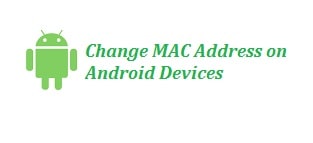

- #ANDROID TERMINAL EMULATOR NOT CHANGING MAC ADDRESS INSTALL#
- #ANDROID TERMINAL EMULATOR NOT CHANGING MAC ADDRESS ANDROID#
- #ANDROID TERMINAL EMULATOR NOT CHANGING MAC ADDRESS SOFTWARE#
Aside from the use of standard SSH, some emulators allow the use of technologies like VNC and XSDL. Many emulators of other OSes allow the use of extensions. Because Toybox is used mostly in the back-end, it depends on how the app was developed, for Toybox to be accessed from the semi-emulated enhanced terminal.

#ANDROID TERMINAL EMULATOR NOT CHANGING MAC ADDRESS ANDROID#
With the semi-emulating, some predefined ported packages can be used and installed without the need of rooting the device, as they do not utilize Android system files, and reside and run in the apps' own data containers and directories. This is done via semi-emulating a different environment via the usage of PRoot and/or Toybox in the back-end. Some terminal emulators like Termux allow users to add packages. Some of these terminal emulators allow users to enter Toybox commands implicitly, where those that don't require the usage of "toybox COMMAND". In order for a user to add any other functions or libraries would require the user to root their own device and add the functions or libraries manually. However due to the fact that the majority of the functions that are readily available without utilizing a compatibility layer, means that Toybox functions can only be utilized. Most of these terminal emulations of the device itself utilize the native terminal Toybox toolchain's library and functions that come with every android device. Terminal emulation of the Android device itself is done via either an actual local loopback to the device, or an emulation that seems to be a local loopback. Terminal emulation of internal operating system However, not all packages and applications can run.
#ANDROID TERMINAL EMULATOR NOT CHANGING MAC ADDRESS INSTALL#
Unlike terminal emulators that emulate the internal OS with/without any extension package support, it can install actual (for example) Ubuntu packages, as it does not rely too much on the Android system limitations. This does come with limitations as some emulators utilize PRoot which is a chroot like environment. Emulation Types of emulations Emulation of other operating systems Įmulation of other operating systems on Android require the usage of some form of compatibility layer, where the compatibility layer must utilize some form of technologies or APIs to run the OS inside of the app container.
#ANDROID TERMINAL EMULATOR NOT CHANGING MAC ADDRESS SOFTWARE#
Due to the nature of platform virtualization and the fact that it can virtualize a rooted guest OS, it has a greater advantage over emulators as it can run applications or utilize packages that require access to the underlying system itself.Īs with all platform virtualization software and applications, they take up a lot of resources of the host in order to do the virtualization. Due to this it is possible for the guest operating system to be rooted, where as the host operating system remains unrooted. Platform virtualization allows more leverage to the developer as anything that relates to the guest operating system only affects the guest operating system, and not the host operating system. Ī major downside that desktop virtualization apps have compared to other types of virtualization or emulation technologies is that they require a network connection to the server as stated previously above. For example, VMware Horizon Client requires specific VMware equipment for the app to work. Most business oriented desktop virtualization apps require specific types of equipment or services in order for the app to fully function. Depending upon how the desktop virtualization app works, they use RDP or can use another protocol of their own.

3.1.1 Emulation of other operating systems.


 0 kommentar(er)
0 kommentar(er)
